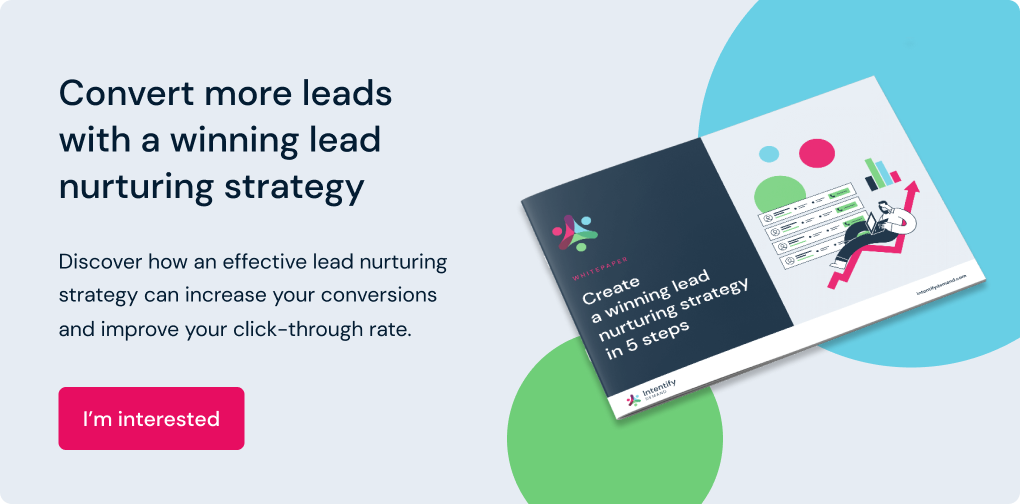Lead demand generation remains the top marketing challenge for businesses. It’s a complex process that covers multiple channels, involves multiple touchpoints, and relies on multiple datasets.
Anyone implementing a demand generation strategy is bound to face some common challenges. But, while these challenges may seem daunting, they’re not insurmountable.
Here’s how you can solve them.
1. Leads aren’t turning into customers
The simple fact is, not everyone will convert. But if a sure thing slips through your fingers, you might have a problem.
You’re not following up with your leads at the right time
Timing in sales is about striking a balance. Leave it too late and your leads will move on. Move in too soon and you may scare them off before they’re ready to talk.
Eighty percent of sales deals require five follow-up calls to close. This doesn’t mean you have to barrage a prospect into converting. Space out your contact and diversify your communications. Beyond phone calls, send a personable email or LinkedIn message.
You’re not nurturing your leads effectively
The buyer’s journey is… well… a journey. Your customer will complete a series of steps before they decide whether or not to purchase.
If you don’t provide resources and communication at each and every stage of the journey, you’re missing an opportunity to nurture your leads. But it takes more than this. You need to target them with messaging that addresses their specific concerns.
2. You’re targeting the wrong customers
Targeting too broad of an audience will waste your valuable resources—and won’t generate a worthwhile return.
You need to figure out who your customers are. To understand their needs and desires, you must conduct research on them so you can learn to think like them. Then you can craft solid, detailed ideal client profiles (ICPs).
An ICP is a persona you create with specific business characteristics in mind. It should include the following:
- The person's role
- Skills they require to do their job
- Their typical responsibilities
- Who they report to
- Their company size, industry and location
- Their company’s annual revenue
Then, ask yourself what their pain points are. Are they having issues with productivity, or are they spending too much on their current services? And, how can you help them meet their goals? Understanding all of this context is necessary for content marketing, lead nurturing, and ultimately, lead conversion.
3. Lacklustre results from content campaigns
Firstly, it’s important to define what exactly you expect from your content campaigns. Do you want to increase traffic to your website? Or raise awareness about a certain topic and your view on it? Knowing what success looks like will help you identify when you’re failing.
That said, if your content isn’t hitting the mark, there could be a very good reason. So, ask yourself the following:
- Does your content address a common pain point?
- Are you posting content regularly?
- Are you optimising your on-page SEO?
- Are you sharing your content on social media?
It’s also crucial that you target not just the ideal customer, but each stage of their journey. To do so effectively, you’ll need to understand where they are in the sales funnel. And that takes in-depth analysis and insight.
Solve your demand generation challenges with intent data
Lead demand generation can be fraught with challenges. You might find your leads aren’t turning into customers, or the customers you’re targeting aren’t the right fit. You might find your content isn’t bringing in the traffic you need to raise awareness of your brand, and make customers consider you.
Effective demand generation means having good timing. But it also means gaining an in-depth knowledge of ICPs, and then targeting them with an iron-clad content strategy.
To do this well, you need strong data insights. But gaining these insights isn’t always easy. Nor is every dataset reliable. If you’re struggling to get accurate information to support your demand generation strategy, it might be time to consider 1st-party purchase intent data.
At Intentify Demand, we select high-intent leads with a 97 percent degree of accuracy. Using the insights we provide,you can build an arsenal of relevant content, with resources such as case studies to back up your positioning. So your teams know who to target and when, with more impactful messaging, and a stronger chance of converting leads.
To find out more, get in touch.




